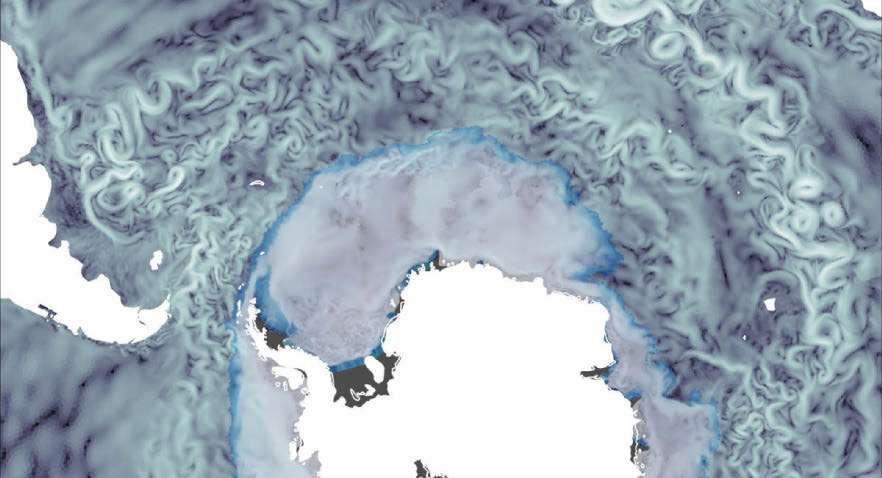A reminder of the facts
In the Arctic, sea ice has halved since 1979. A shrinkage expected…but the Antarctic appears to be mysteriously getting away with it.
Please note: we are talking here of ice packs, not ice caps, formed from precipitation and covering Antarctica or Greenland with a thickness of up to several kilometers of frozen fresh water. On the other hand, an ice pack is the ice layer of salty sea water that drifts on the surface of the polar oceans. In the North, its thawing is the subject of disastrous annual assessments. Thus, the extent of Arctic sea ice in late summer has decreased by about 13% every decade since 1979, and according to experts from the IPCC, it will be completely gone before the summer of 2050. But the news is very different in the South….. …. We haven’t recorded any decrease in Antarctic sea ice since the satellites went live Monitored 40 years agoreveals Martin Vancopinol, a CNRS researcher at the Laboratory of Oceanography and Climatology in Paris. However, models that simulate the dual behavior of the atmosphere and From the ocean, which describes the collapse of sea ice in the Arctic, indicates that in Antarctica, it should have already begun to decline!
>> Read also: Arctic: What would happen if all the sea ice melted?
This mystery is quite surprising because Antarctic sea ice is thinner than its northern counterpart, while subject to the same temperatures. So, in theory, melting them should be easier! “It’s a real pebble in the place of climate scientists,” The world breathes. Why this resistance? Several hypotheses have been put forward. The accelerating melting of the Antarctic ice sheet could release such a quantity of fresh water into the upper layers of the Southern Ocean that it exacerbates the differences in salinity between the surface and the depths. This phenomenon would then lead to increased stratification of the oceans and a reduction in heat exchange, protecting the ice pack.
Another possibility: strong winds from the Southern Ocean, due to climate change, will push the ice pack away from Antarctica. Then new ice will form near the coast, on the sea leaving a vacancy, allowing the ice to maintain a stable overall surface. Finally, researchers from the Alfred Wegener Institute in Germany modeled the region’s climate with ten times spatial accuracy. This allowed them to highlight a hitherto unremarkable phenomenon, and formulate it The third hypothesis…
Ice That Doesn’t Make: Modified Water Exchange
The vortices with a diameter of about ten kilometers located in the region seem to disrupt the circulation of ocean currents: they thus modify the water exchanges between the equator and Antarctica, limiting heat transfer towards Antarctica. If this effect is confirmed, then the melting of Antarctic sea ice can only occur … after 2050!
>> Read also: A strange natural source of heat is accelerating the melting of the Greenland ice sheet

“Music guru. Incurable web practitioner. Thinker. Lifelong zombie junkie. Tv buff. Typical organizer. Evil beer scholar.”






More Stories
A large manufacturing project awaits space in the industrial zone
According to science, here are officially the two most beautiful first names in the world
Green space, 100% pedestrianized: DIX30 reinvents itself